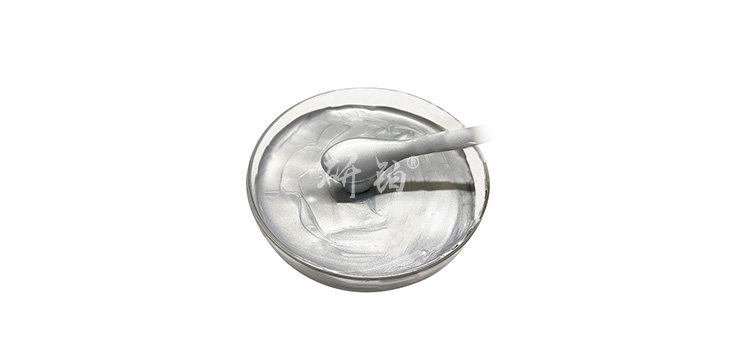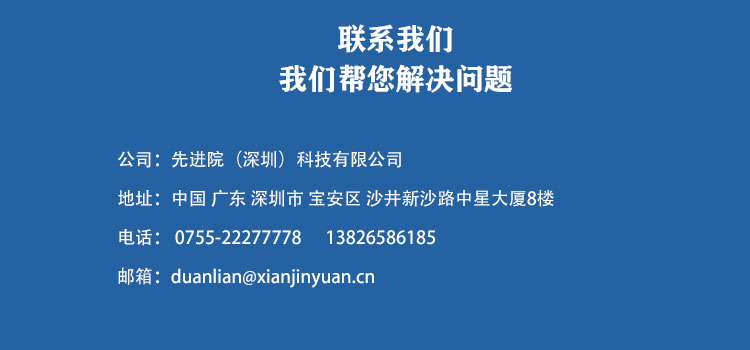

Hotline:0755-22277778
Tel:0755-22277778
Mobile:13826586185(Mr.Duan)
Fax:0755-22277776
E-mail:duanlian@xianjinyuan.cn
Pressureless sintered silver pasteIt is a functional material widely used in the field of electronic packaging, known for its excellent thermal conductivity. Thermal conductivity is an important indicator for measuring the heat transfer ability of materials and is crucial for ensuring the stable operation of electronic devices. This article will explore the factors related to the thermal conductivity of pressureless sintered silver paste, in order to provide reference for research and application in related fields.
The pressureless sintered silver paste is mainly composed of nano silver particles, binders, and other additives. During the sintering process, nano silver particles fuse with each other to form a dense conductive network, while achieving excellent thermal conductivity. The level of thermal conductivity directly affects the heat conduction efficiency of electronic devices during operation, which in turn affects the stability and lifespan of the equipment.
The particle size of nano silver particles is one of the key factors affecting the thermal conductivity of pressureless sintered silver paste. Generally speaking, the smaller the particle size, the larger the contact area between silver particles, and the denser the formed thermal conductivity network, resulting in better thermal conductivity. In addition, the uniform distribution of silver particles on the surface of the substrate also helps to improve thermal conductivity.
The relationship between sintering temperature and timePressureless sintered silver pasteThe thermal conductivity has a significant impact. Appropriate sintering temperature can fully fuse nano silver particles and form a dense conductive and heat conducting network. However, excessive sintering temperature may lead to oxidation or burning of the silver layer, reducing thermal conductivity; If the sintering temperature is too low, it may lead to insufficient fusion between silver particles, which also affects the thermal conductivity. The length of sintering time also affects the degree of fusion of silver particles and the density of the thermal conductivity network.
The binder plays a role in fixing nano silver particles in pressureless sintered silver paste, and its selection and dosage also have a certain impact on the thermal conductivity. The binder should have good thermal conductivity to form a good thermal conductivity channel with silver particles during the sintering process. At the same time, the amount of adhesive used should be moderate, as excessive use may reduce the contact area between silver particles and affect thermal conductivity; Insufficient amount may lead to weak bonding between silver particles, affecting the overall performance of the material.
In order to improve the thermal conductivity of pressureless sintered silver paste, special additives such as thermal fillers and sintering aids are sometimes added. Thermal conductive fillers can increase the thermal conductivity channels of materials and improve their thermal conductivity; The sintering aid can lower the sintering temperature, promote the fusion of silver particles, and thus improve the thermal conductivity. However, the amount of additives used should be strictly controlled to avoid negative effects on the overall performance of the material.
The properties of the substrate, such as thermal conductivity and surface roughness, also affect the thermal conductivity of pressureless sintered silver paste. A substrate with good thermal conductivity can more effectively transfer heat and improve overall thermal conductivity. A substrate with a higher surface roughness can increase the contact area between the silver paste and the substrate, thereby improving thermal conductivity.
Pressureless sintered silver pasteThe thermal conductivity of silver nanoparticles is influenced by various factors, including particle size and distribution, sintering temperature and time, selection and dosage of binders, use of additives, and properties of the substrate. In practical applications, it is necessary to comprehensively consider these factors and optimize material formulations and process parameters to improve the thermal conductivity of pressureless sintered silver paste and meet the demand for high-performance thermal conductive materials in the field of electronic packaging. With the continuous advancement and innovation of technology, we believe that in the future, more high-performance and high thermal conductivity pressureless sintered silver paste will emerge, injecting new vitality into the development of the electronics industry.
The above data is for reference only, and specific performance may vary due to production processes and product specifications.

Advanced Institute (Shenzhen) Technology Co., Ltd, © two thousand and twenty-onewww.leird.cn. All rights reservedGuangdong ICP No. 2021051947-1 © two thousand and twenty-onewww.xianjinyuan.cn. All rights reservedGuangdong ICP No. 2021051947-2